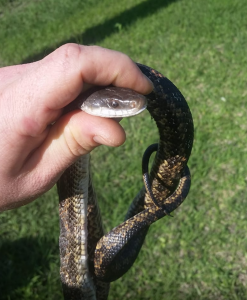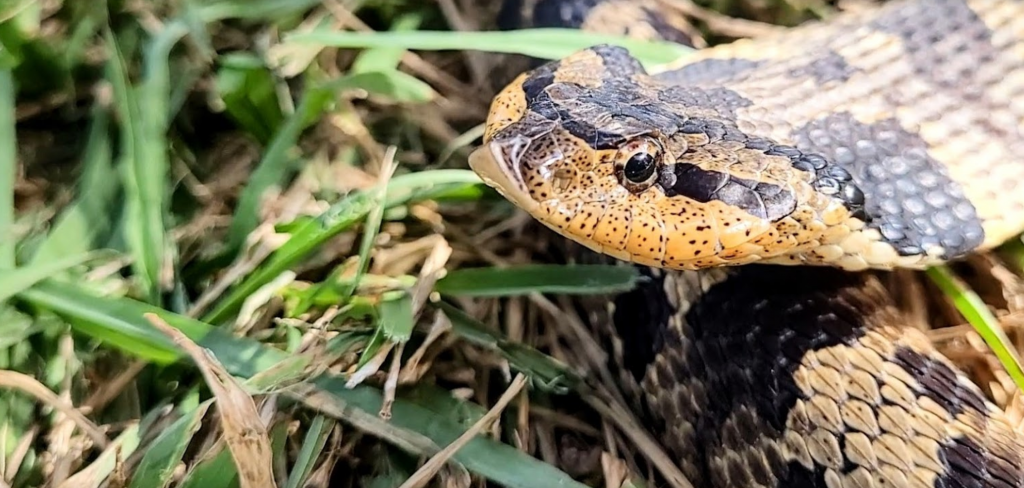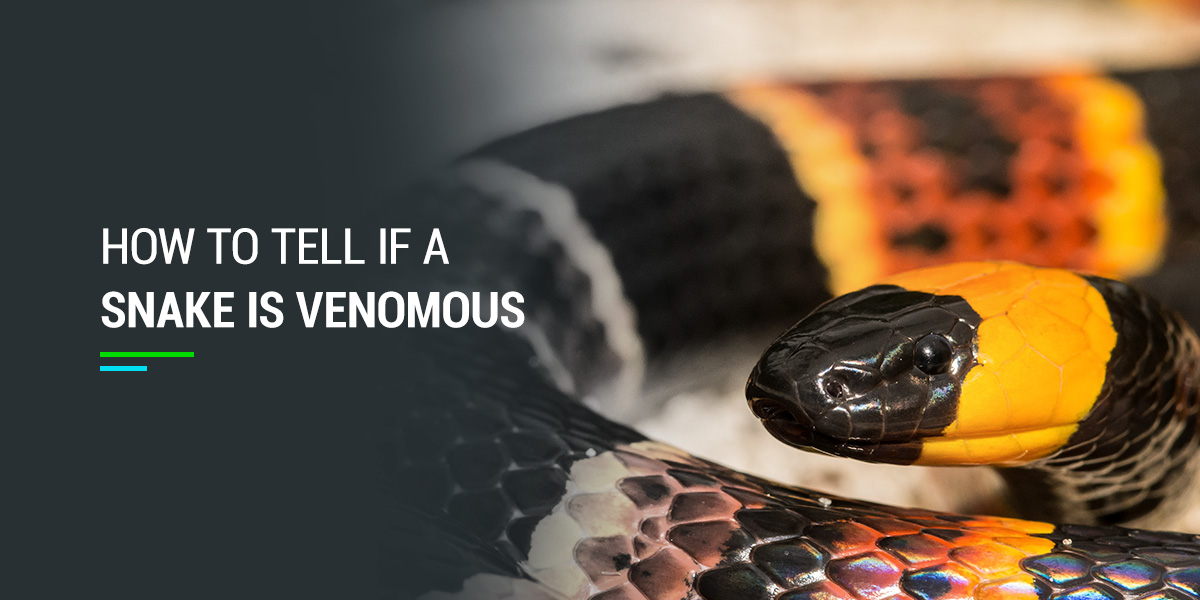Snakes play a significant role in maintaining our ecosystems and removing pests. However, they can also be a nuisance to you, your family and your pets. Educating yourself on snakes and taking proactive measures are the best ways to mitigate snake problems.
Request Snake Removal Services ➔

Appearance
The United States is home to around 50 snake species, 30 of which are venomous. Some are rarer than others, but these four venomous species are common in Texas:
- Cottonmouth: Also known as water moccasins, cottonmouths have triangular heads, cat-like pupils and prominent jowls. Their colors vary, from dark brown and olive to banded brown and yellow.
- Copperhead: These aptly named snakes have solid brown heads with two small dots on top. Their colors range from tan to brown with dark, hourglass cross bands.
- Western Diamondback Rattlesnake: Diamond-Backed rattlesnakes are large and heavy-bodied. There are two dark diagonal lines running from the eyes to its jaws, on each side of its head. It has prominent dark diamond-shaped patterns along is back. The black and white bands on its tail just above the rattles are characteristic of W. diamondback rattlesnakes.
- Coral Snakes: The coral snake has aposematic coloration of black, yellow, and red serves as a warning for other animals to keep their distance. This is the only venomous snake in North America closely related to cobras. This slender, secretive snake may attain lengths as great as 4 feet. While some nonvenomous snakes mimic the coloration of coral snakes the pattern differs. Remember the rhyme “Red on yellow, kill a fellow. Red on black friend of jack.”
In the United States and, with the exception of the coral snake, You can typically spot a venomous snake by its triangular head and slit pupils. However, some nonvenomous snakes will mimic a venomous snakes head shape to deter predators. Several nonvenomous snakes will also rattle their tails, depending on the leaf litter to mimic the sound of a rattlesnake.
Diet
Many wildlife programs and shows depict snakes as mouse and rat eaters. While some snakes do eat rodents, diets depend on the species. All snakes are carnivores and swallow food whole.
A snake’s diet may consist of:
- Eggs
- Fish
- Worms, slugs and snails
- Insects
- Mice and rats
- Frogs, toads and other amphibians
Behavior
Snakes are cold-blooded and rely on the environment to regulate their temperature. They seek out thick brush, moist areas or any obscured location for shelter. Breeding seasons can occur right after hibernation in spring and continue through the summer into early fall. Since they’re constantly growing, snakes must shed their skin once they’ve outgrown it. Younger snakes will shed more often.
Although snakes usually avoid people, they can carry harmful diseases such as salmonella, botulism and campylobacteriosis. They can also prey on poultry and small farm animals, which can affect your livelihood.
Snakes are always on the lookout for food or shelter.
Signs
Because snakes are good at concealing themselves, many homeowners may not realize they have an uninvited guest. Some tell-tale signs include:
- Shedding or molted skin
- Eggs
- Slithering tracks in dust or dirt
If you notice these indicators, it’s best to call professional snake removal services.
Prevention Is the Most Effective Snake Removal
Although one-time pickups and removals can temporarily solve a snake issue, ongoing control is essential for a snake-free property. Take preventative actions like:
- Removing food sources: Bring structures like birdbaths and bird feeders and feed pets indoors. These food and water sources can attract mice and bugs which the snakes feed on.
- Using deterrents: Snake repellants affect a snake’s sense of smell, discouraging them from nesting in or around your home. Make sure to read labels and ensure your deterrent is safe for both pets and snakes.
- Reinforcing entry points: Check if slithering tracks lead to potential entry points. Seal off unwanted entries and strengthen necessary ones like doors and crawlspaces.
Choose Urban Jungle for Snake Management Solutions
Urban Jungle is your go-to source for professional snake management. We proudly serve clients throughout Texas. Our experts go beyond trapping and removal services — we also offer exclusion and repair work to provide you with a reliable, long-term solution to prevent snakes from getting into your home. You’ll receive access to a one-year warranty and a team you can trust. We have snake management plans to control potential food sources for snakes; if there is less food for them, they have less reason to be around. Our recurring management plans include free snake removal.
Contact us today to learn more!


